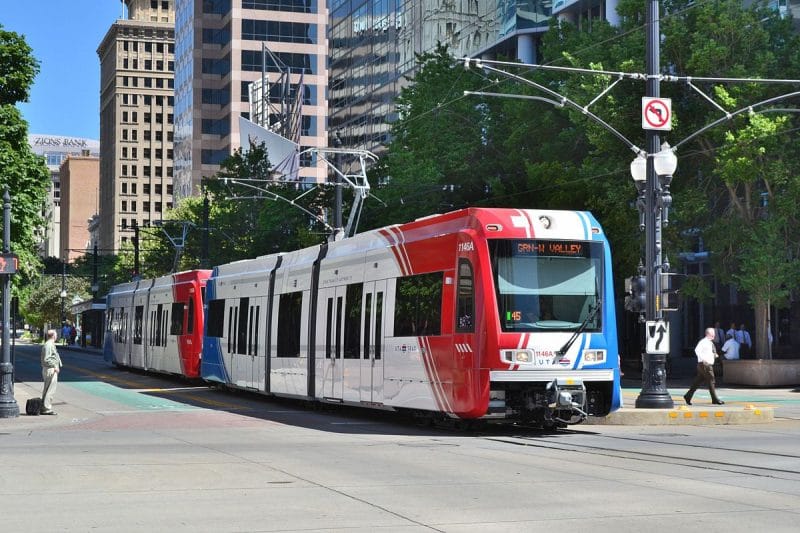To the jubilation of unnumbered UTA passengers, the FrontRunner train system has been finished and opened for public use almost 3 years ahead of schedule and under budget. Now, instead of a long, lurching journey from Utah County to the Salt Lake City area—a commute which can take 2 hours or more under unfavorable driving conditions—riders have the option of bypassing I-15 altogether for a ride on the rails that takes under an hour. Utah Transit Authority approximates that the number of passengers traveling between Provo and Salt Lake City will triple with the advent of FrontRunner, serving an estimated 6,800 passengers daily. Although accommodation of FrontRunner entails adjustments in departure times, the number of stops, etc., the new public transit system is expected to benefit UTA patrons far more than it inconveniences them in the short term.
There is much to celebrate in the commencement of FrontRunner, even without taking into account the time it will save so many commuters: the more people opt to take the train, the fewer will be expending energy by driving singly; and the less congestion on I-15, the fewer opportunities there will be for traffic accidents. Auto accidents are common nationwide, but train accidents are exceedingly rare. (Utah saw only 2 last year, according to a report from the Federal Railroad Administration.) However, the growth of the rail system calls for a discussion of the risks that do accompany the operation of a locomotive, relatively few though they may be.
Table of Contents
1. Derailment
While derailment usually occurs with trains carrying a lot of weight over a high center of gravity, passenger trains are at risk on misaligned rails or tight curves at high speeds. A train with an even weight distribution that is skillfully handled should be impervious to this sort of trouble. If a train’s design is well in keeping with its purpose, train accidents are far less likely.
2. Collision with motor vehicles at railroad crossings
Predictably, the motor vehicle on the receiving end of such an accident will get the short end of the stick. However, a sizeable obstruction on the rail could cause derailment and additional damage to the train and its contents. This is a particular risk to smaller, lighter trains, which may be thrown off by something as small as an animal, like a deer. Particular care should be taken to keep the path of a train free of obstacles
3. Electronic or mechanical malfunctions
Electrical misfire or a chemical imbalance in a train’s engine can pose a variety of dangers: fires may ignite, explosions may ensue, and any sort of mayhem may follow that sort of disaster. Derailment may result from other malfunctions, leading to still more mayhem in places where derailment would not normally be a risk. Proper care to keeping a train in good working order should prevent such accidents.
4. Poorly maintained railroad tracks
A common reason for trains running off the rails is poorly-made/kept tracks. Unevenness, weathering, and faulty track geometry, especially on an incline, put trains at risk for perilous loss of stability and loss of contact with the rail line. Railroad tracks should be kept in good condition.
5. Conductor oversight
By and large, train conductors are highly competent individuals with an appreciation for their responsibility to keep their passengers safe from harm to the best of their ability. Unfortunately, there are a few exceptions to every general rule. A railroad conductor who doesn’t take their work seriously has the potential to author tragic calamities.
If the worst should take place, and you or a loved one are injured in a train accident, there is help for recovering damages insofar as that is possible. Utah personal injury attorneys Good Guys Injury Law sport a proud history of assisting their clients in their search for treatment and closure with integrity and compassion. To discuss your situation with caring, qualified professionals, call toll-free at (801) 506-0800.
Image courtesy: Flickr user Garrett
